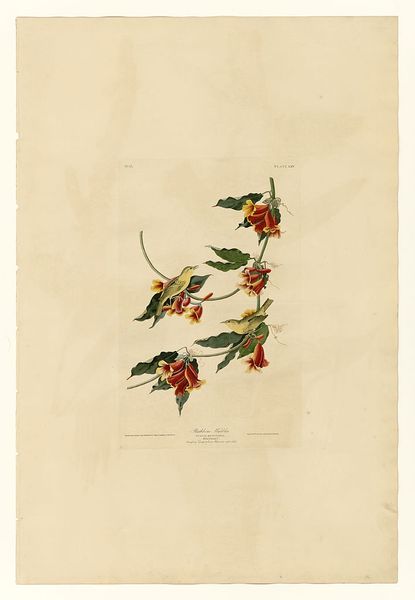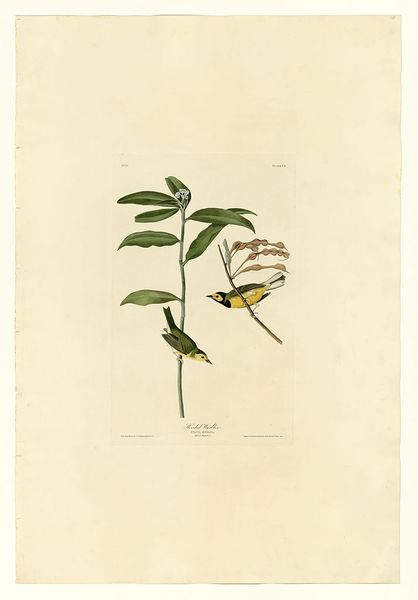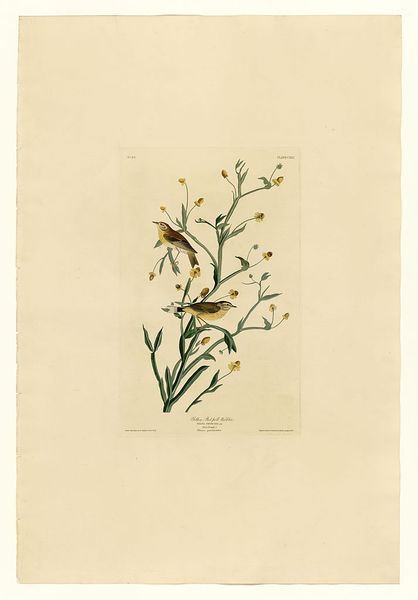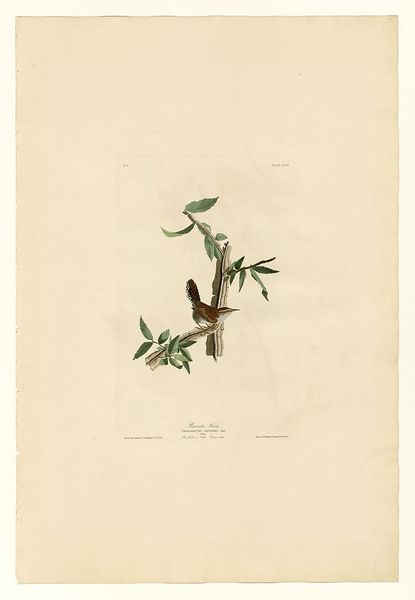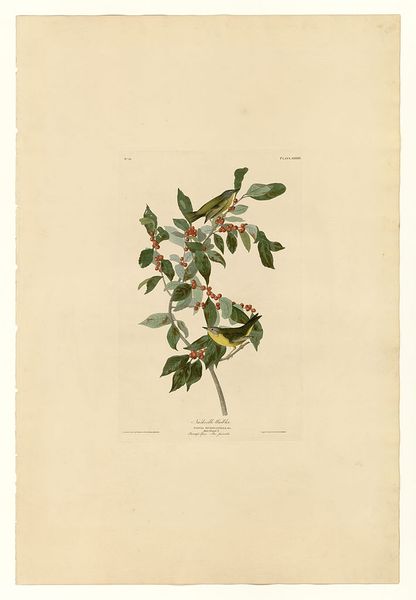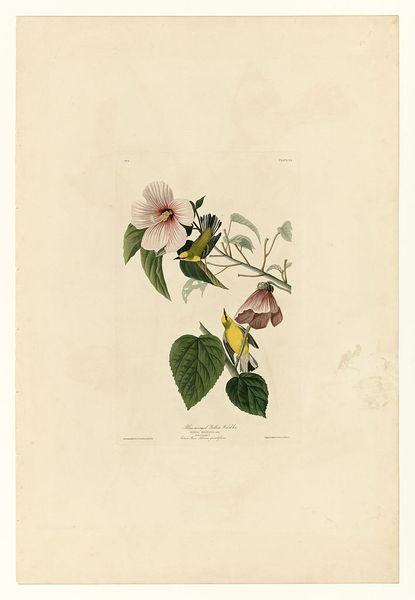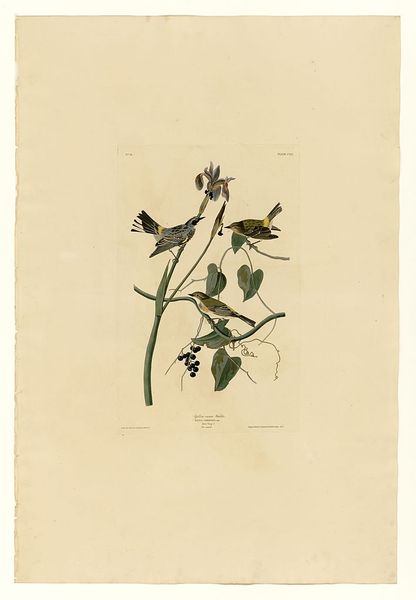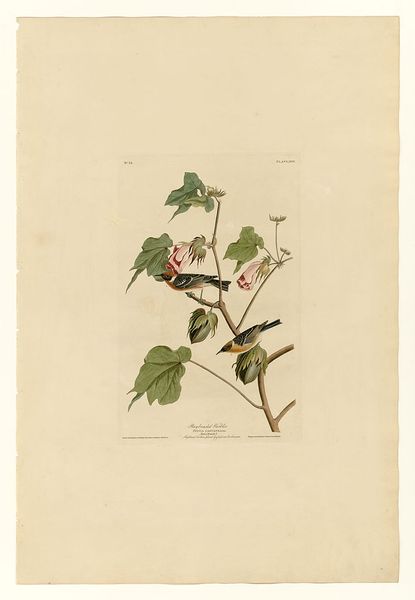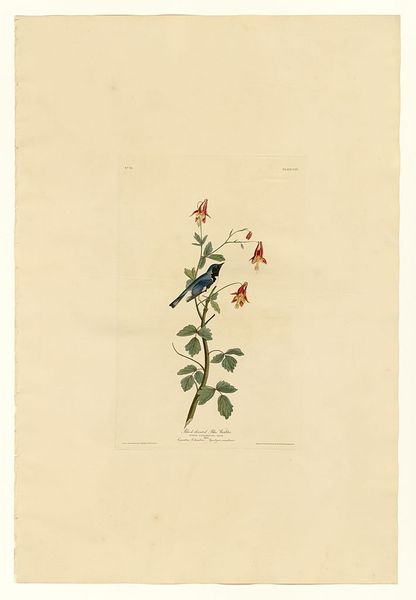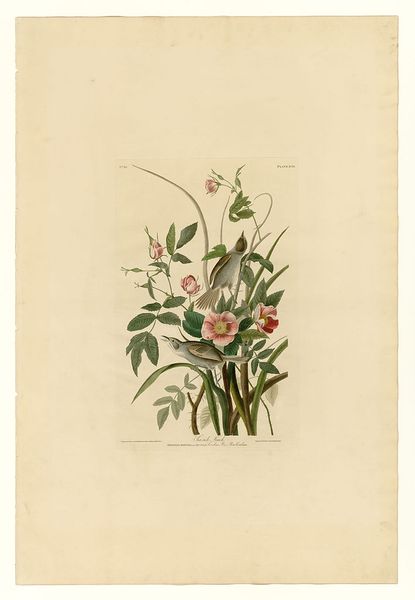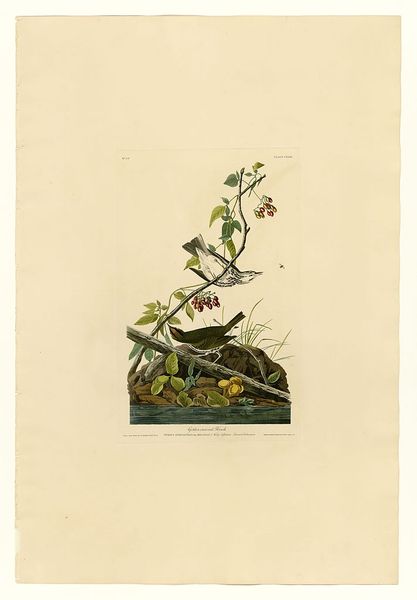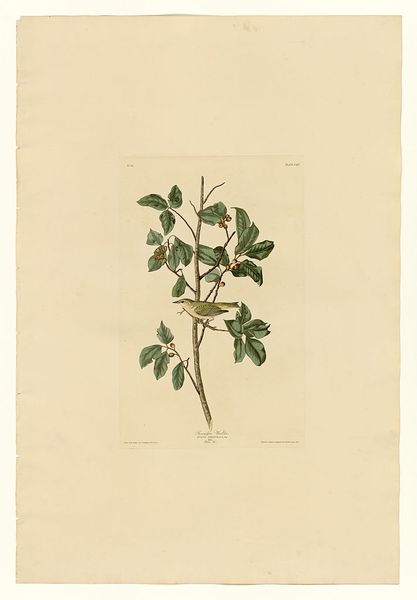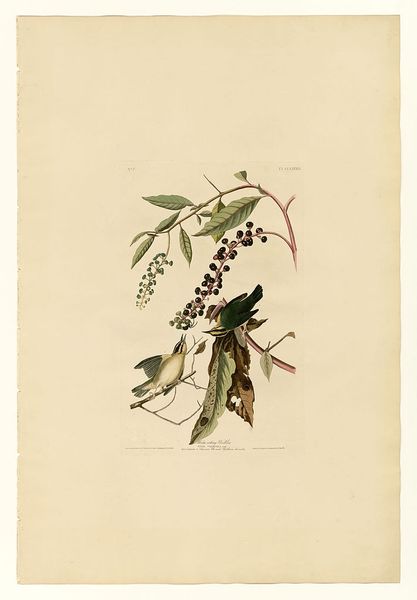
painting, watercolor
#
painting
#
landscape
#
watercolor
#
romanticism
#
naturalism
#
realism
Copyright: Public domain
Plate 33, American Goldfinch, was made by John James Audubon in the early 19th century, a period marked by the expansion of scientific exploration and the romanticization of the American landscape. Audubon, who was of mixed race ancestry, sought to document all the birds of America. The goldfinch, with its bright plumage, embodies a certain ideal of untamed beauty. Yet, the practice of cataloging nature was deeply entwined with colonialism. Consider the power dynamics inherent in naming and classifying living beings. The goldfinches are perched on a thistle plant, their delicate forms juxtaposed against the plant’s sharp thorns. Audubon captures a moment of sustenance. The birds represent a kind of freedom and naturalness but also remind us of the intricate, often harsh realities of the natural world. Audubon said he felt driven by a desire to "witness nature." His legacy is complex, reflecting both a deep appreciation for the natural world and the problematic aspects of his time.
Comments
No comments
Be the first to comment and join the conversation on the ultimate creative platform.
